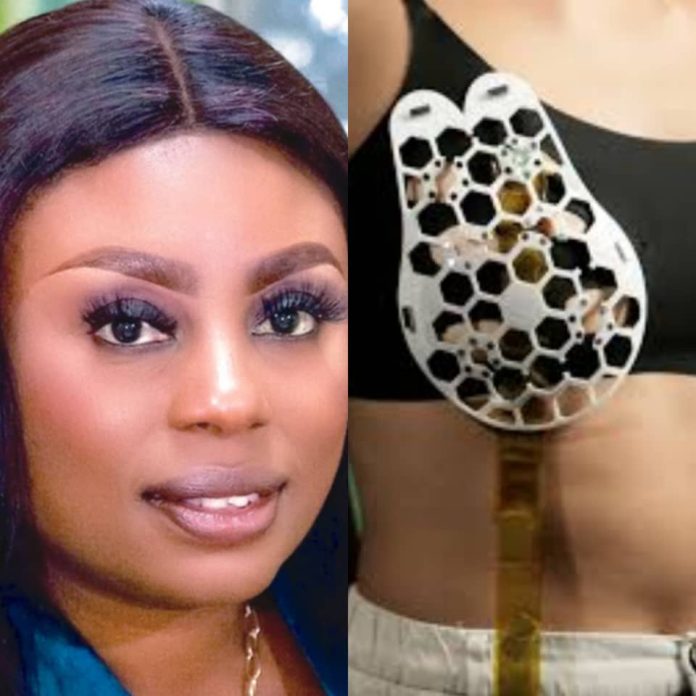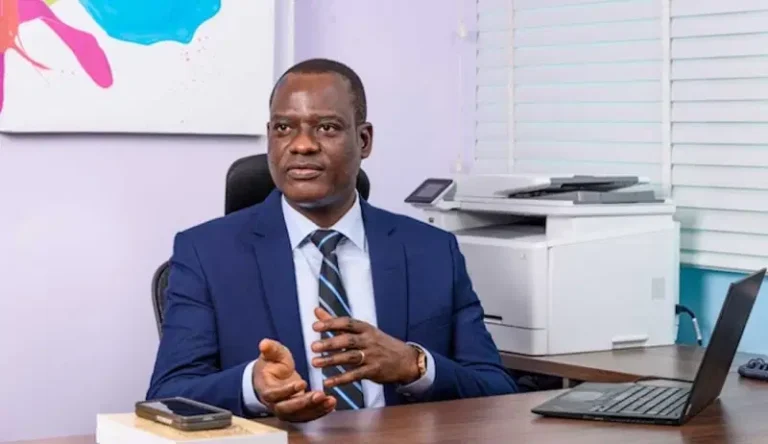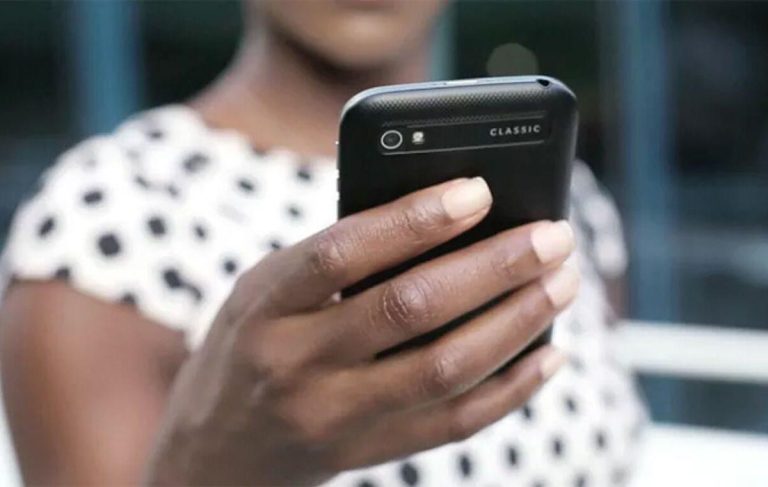
Kemisola Bolarinwa, CEO of Nextwear Technologies, is featured in this report by YEJIDE GBENGA-OGUNDARE in honour of Pink October, a month designated globally to raise awareness on breast cancer by putting in efforts to educate those concerned about the disease, including early identification and signs and symptoms associated with breast cancer.
Nextwear Technologies was the first wearable technology startup in Nigeria, and its founder and CEO, Kemisola Bolarinwa, is an unconventional business leader. She is an innovator in the field of robotics, and her work has led to medical advances. Using her scientific training, she has developed a number of useful tools, including a GPS necklace that can be worn to keep track of a person’s whereabouts (first released in 2020, when there were “overwhelming cases of kidnapping across Nigeria”) and a watch that can measure vital signs like core temperature, pulse rate, and oxygen saturation.
Inspired to invent a smart bra after learning of her aunt’s untimely death from breast cancer, Kemisola has drawn on her background in robotics and system engineering to develop a device that can detect the disease in its earliest stages, before any symptoms appear. BBC Africa has recognised her innovation as being novel because it makes conventional diagnostic testing available to people in rural and low-income areas who otherwise would not have access to such services.
The death of Bolarinwa’s aunt from breast cancer in 2019 “triggered palpable fear” in her and inspired her to create the smart bra, the year in which she also launched her company and served as President of Women in ICT, a non-profit organisation. Her prototype uses ultrasound to detect potential tumours in 30 minutes; similar technology has been developed in Switzerland and Mexico and will soon undergo a large-scale trial in Nigeria.
The device can be worn at home by a woman, and the results can be sent to her smartphone via an app. If further medical attention is needed, the device can send the data to a physician’s office for review.
Kemisola stated, “the aim is to reduce the number of women dying from breast cancer by 80 percent using our wearable device, in line with the 2030 sustainable development agenda. My primary goal for my 2019 foray into wearable technology was to create a tool for early breast cancer detection. I am confident that the technology my team and I are bringing to Nigeria will make this device a game-changer in the fight against breast cancer worldwide, not just in Nigeria.
She has stated her desire to see the product go on sale and also made available for free to women who cannot afford to buy one, and the Nigerian government and Standard Chartered bank have both contributed to the project.
The smart bra incorporates a miniature ultrasound device for the purpose of locating breast lumps. Creating a wearable ultrasound device by reducing the size of existing models. And Bolarinwa claims this was made possible by nanotechnology, a field of science, technology, and engineering concerned with the production of miniature technological devices.
The smart bra detects blood clots, heart defects, and blocked arteries by using an ultrasound system called the Doppler to bounce high-frequency sound waves off the body. Contrast that with ultrasound scanners, which use sound waves to create images of the scanned area, and you’ll see how this technology operates.
To detect growths, the Doppler ultrasound was modified into tiny sensors sewn into the bra’s cups. In addition, the smart bra utilises IoT to relay data to a user’s mobile device or computer. A lithium-polymer (LiPo) battery provides the device’s energy.
Bolarinwa discovered that many women either don’t know how or don’t think it’s necessary to check for lumps in their breasts regularly, so she designed the Smart bra to do this automatically. The readings needed can be obtained in as little as 30 minutes of wearing the device, and its Internet of Things (IoT) and Application Programming Interface (API) components translate readings into understandable information via a mobile app.
There is still a long way to go before the smart bra is ready for commercialization, despite the years spent researching and developing a prototype.
Nextwear Technologies has not had any trouble securing funding, despite the fact that the company has yet to release a product to the market. Kemisola claimed that the launch of the prototype resulted in numerous contacts with her. She had raised over $120,000 from various sources, with some offering suggestions for improving the sensors’ ability to detect higher-frequency signals while others offering investment opportunities.








